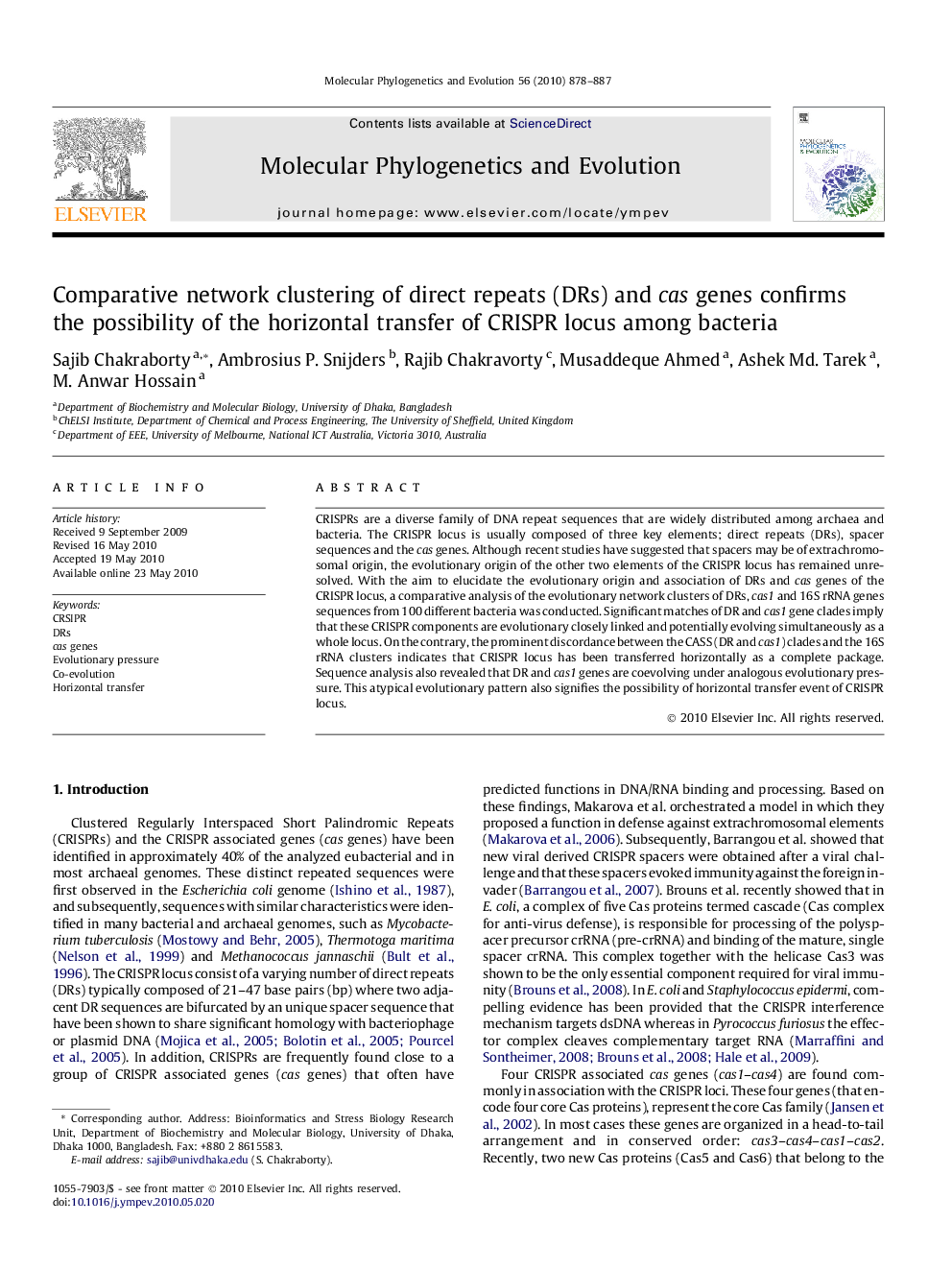| Article ID | Journal | Published Year | Pages | File Type |
|---|---|---|---|---|
| 2834585 | Molecular Phylogenetics and Evolution | 2010 | 10 Pages |
CRISPRs are a diverse family of DNA repeat sequences that are widely distributed among archaea and bacteria. The CRISPR locus is usually composed of three key elements; direct repeats (DRs), spacer sequences and the cas genes. Although recent studies have suggested that spacers may be of extrachromosomal origin, the evolutionary origin of the other two elements of the CRISPR locus has remained unresolved. With the aim to elucidate the evolutionary origin and association of DRs and cas genes of the CRISPR locus, a comparative analysis of the evolutionary network clusters of DRs, cas1 and 16S rRNA genes sequences from 100 different bacteria was conducted. Significant matches of DR and cas1 gene clades imply that these CRISPR components are evolutionary closely linked and potentially evolving simultaneously as a whole locus. On the contrary, the prominent discordance between the CASS (DR and cas1) clades and the 16S rRNA clusters indicates that CRISPR locus has been transferred horizontally as a complete package. Sequence analysis also revealed that DR and cas1 genes are coevolving under analogous evolutionary pressure. This atypical evolutionary pattern also signifies the possibility of horizontal transfer event of CRISPR locus.
